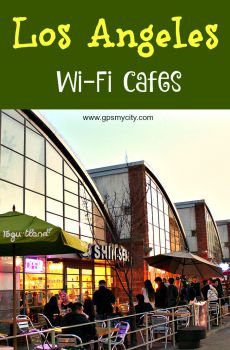Chinatown Walking Tour (Self Guided), Los Angeles
Unlike other cities where Chinese immigrant neighborhoods were formed organically, the Los Angeles Chinatown is the only planned Chinatown in the US. A blend of Chinese and American architecture, it was developed in downtown LA, as a tourist attraction, in the 1930s.
Designed by Hollywood artists as a "Chinese" movie prop to create an exotic atmosphere, LA's Chinatown gives out the impression of Hong Kong, Taiwan, Shanghai, or Kuangchou. As one of the first outdoor shopping malls in the United States, it is also rich in exotic sights, smells, and sounds of the Orient, as well as savory foods and unusual souvenirs.
One of the most iconic landmarks in the area is Union Station, a historic transportation hub that connects various parts of the city. It serves as a gateway for visitors to explore the diverse attractions of Chinatown.
The Chinese American Museum is an essential stop for anyone interested in the history and heritage of Chinese-Americans in the United States. It offers insight into the contributions of the Chinese community to the country's cultural tapestry.
As you enter this lively neighborhood, you can't miss the striking Chinatown Gateway Monument, also known as the Dragon Gate, a beautiful structure adorned with intricate designs and traditional Chinese motifs.
For food enthusiasts, the Far East Plaza is a must-visit. This bustling food court features a wide array of delectable Asian cuisine options, from dumplings to noodles, offering a taste of authentic Chinese flavors.
Central Plaza, at the heart of Chinatown, is a Hollywoodized version of Shanghai and features names like Bamboo Lane, Gin Ling Way, and Chung King Road taken from the city of Chongqing in mainland China. Surrounding the square are historic structures like the East and West Gates, each with its unique charm. In this hub of activity, you can explore shops, sample street food, and soak in the vibrant atmosphere.
And of course, while here, don't forget to visit the Wishing Well, a serene spot where visitors can make a wish by tossing a coin into the water, following a tradition that brings good luck.
The Los Angeles Chinatown is a blend of history, culture, and delicious cuisine. It's a place where you can immerse yourself in the rich traditions of the Chinese community while enjoying a modern, urban setting – an experience you wouldn't want to miss!
Designed by Hollywood artists as a "Chinese" movie prop to create an exotic atmosphere, LA's Chinatown gives out the impression of Hong Kong, Taiwan, Shanghai, or Kuangchou. As one of the first outdoor shopping malls in the United States, it is also rich in exotic sights, smells, and sounds of the Orient, as well as savory foods and unusual souvenirs.
One of the most iconic landmarks in the area is Union Station, a historic transportation hub that connects various parts of the city. It serves as a gateway for visitors to explore the diverse attractions of Chinatown.
The Chinese American Museum is an essential stop for anyone interested in the history and heritage of Chinese-Americans in the United States. It offers insight into the contributions of the Chinese community to the country's cultural tapestry.
As you enter this lively neighborhood, you can't miss the striking Chinatown Gateway Monument, also known as the Dragon Gate, a beautiful structure adorned with intricate designs and traditional Chinese motifs.
For food enthusiasts, the Far East Plaza is a must-visit. This bustling food court features a wide array of delectable Asian cuisine options, from dumplings to noodles, offering a taste of authentic Chinese flavors.
Central Plaza, at the heart of Chinatown, is a Hollywoodized version of Shanghai and features names like Bamboo Lane, Gin Ling Way, and Chung King Road taken from the city of Chongqing in mainland China. Surrounding the square are historic structures like the East and West Gates, each with its unique charm. In this hub of activity, you can explore shops, sample street food, and soak in the vibrant atmosphere.
And of course, while here, don't forget to visit the Wishing Well, a serene spot where visitors can make a wish by tossing a coin into the water, following a tradition that brings good luck.
The Los Angeles Chinatown is a blend of history, culture, and delicious cuisine. It's a place where you can immerse yourself in the rich traditions of the Chinese community while enjoying a modern, urban setting – an experience you wouldn't want to miss!
How it works: Download the app "GPSmyCity: Walks in 1K+ Cities" from Apple App Store or Google Play Store to your mobile phone or tablet. The app turns your mobile device into a personal tour guide and its built-in GPS navigation functions guide you from one tour stop to next. The app works offline, so no data plan is needed when traveling abroad.
Chinatown Walking Tour Map
Guide Name: Chinatown Walking Tour
Guide Location: USA » Los Angeles (See other walking tours in Los Angeles)
Guide Type: Self-guided Walking Tour (Sightseeing)
# of Attractions: 9
Tour Duration: 1 Hour(s)
Travel Distance: 1.7 Km or 1.1 Miles
Author: ashley
Sight(s) Featured in This Guide:
Guide Location: USA » Los Angeles (See other walking tours in Los Angeles)
Guide Type: Self-guided Walking Tour (Sightseeing)
# of Attractions: 9
Tour Duration: 1 Hour(s)
Travel Distance: 1.7 Km or 1.1 Miles
Author: ashley
Sight(s) Featured in This Guide:
- Union Station
- Chinese American Museum
- Chinatown Gateway Monument (The Dragon Gate)
- Far East Plaza
- Central Plaza East Gate
- Chinatown Central Plaza
- Wishing Well
- Central Plaza West Gate
- Chung King Road
1) Union Station
Los Angeles Union Station (LAUS) is the main railway station in Los Angeles and the largest railroad passenger terminal in the Western United States, serving almost 110,000 passengers a day. It opened in May 1939, replacing La Grande Station and Central Station (hence the “Union” name), and was the last of the great American rail stations to be built. Today the LAUS sits on the outskirts of New Chinatown, on the plot of land originally occupied by the Tongva village of Yaanga, believed to have been the largest of the Tongva villages, which later marked the heart of L.A.'s Old Chinatown. As the matter of fact, the original Chinatown neighborhood was demolished to make room for the station, sparking fears that it might "forever do away with Chinatown and its environs."
Originally intended as a transcontinental terminus station for the Union Pacific, Santa Fe and Southern Pacific Railways, the LAUS was a major hub for troop movement during World War II. With the advent of air travel, train service declined at depots across the country, including Union Station. As of the 1970s however, the growing use of Amtrak and expansion of local and regional rail revitalized the station as a major transportation hub of Southern California.
Designed in a Spanish Colonial Revival style, the station combines Mission Revival-exterior with Streamline Moderne interior, featuring marble floors, high ceilings and decorative tiles, all of which make it a handsome place and vibrant symbol of downtown’s renaissance. Designated as a Los Angeles Historic–Cultural Monument in 1972, the building was then placed on the National Register of Historic Places in 1980. In 1992 the station was fully restored, and in 2019 celebrated its 80th birthday.
This iconic Los Angeles landmark is well maintained and has a few restaurants and a beer pub on the premises. It often hosts concerts and exhibitions too, and, as such, is a dynamic destination for the arts, entertainment and culture, being more than just a bustling transportation hub in the heart of the city. As a true cultural destination connecting the infinitely varied and wonderful elements, it is also a great place for photography, well worth a visit if you have some extra time in L.A.
Originally intended as a transcontinental terminus station for the Union Pacific, Santa Fe and Southern Pacific Railways, the LAUS was a major hub for troop movement during World War II. With the advent of air travel, train service declined at depots across the country, including Union Station. As of the 1970s however, the growing use of Amtrak and expansion of local and regional rail revitalized the station as a major transportation hub of Southern California.
Designed in a Spanish Colonial Revival style, the station combines Mission Revival-exterior with Streamline Moderne interior, featuring marble floors, high ceilings and decorative tiles, all of which make it a handsome place and vibrant symbol of downtown’s renaissance. Designated as a Los Angeles Historic–Cultural Monument in 1972, the building was then placed on the National Register of Historic Places in 1980. In 1992 the station was fully restored, and in 2019 celebrated its 80th birthday.
This iconic Los Angeles landmark is well maintained and has a few restaurants and a beer pub on the premises. It often hosts concerts and exhibitions too, and, as such, is a dynamic destination for the arts, entertainment and culture, being more than just a bustling transportation hub in the heart of the city. As a true cultural destination connecting the infinitely varied and wonderful elements, it is also a great place for photography, well worth a visit if you have some extra time in L.A.
2) Chinese American Museum
The Chinese American Museum is an integral part of the El Pueblo de Los Angeles Historic Monument, with a specific focus on preserving and sharing the history and experiences of Chinese Americans in California. It stands as the inaugural museum of its kind in Southern California and occupies the oldest surviving structure from Los Angeles' original Chinatown, known as the Garnier Building. Fortunately, this building managed to survive the destruction of much of Old Chinatown in 1933, when Union Station was constructed.
Built in 1890 by French immigrant Philippe Garnier, the Garnier Building was a central hub for the Chinese community from 1890 to 1940. It housed social organizations, businesses, schools, and religious institutions, fostering connections between Chinese and American societies, especially in the face of prevalent anti-Chinese sentiment in Southern California, exacerbated by events like the 1871 Chinese Massacre and the 1882-1943 Chinese Exclusion Acts. The building continued to serve Chinese tenants until the State of California took ownership in 1953.
In 2003, the museum on the premises was established. Chinese American families and businesses generously contributed their cherished possessions to the museum's collection, including traditional clothing, antique furniture, aged photographs, historical letters, audio recordings of elderly Chinese Americans recounting their memories of growing up in Old Chinatown, children's toys, and more.
The museum features permanent exhibitions on Chinese immigration to Los Angeles, including "Origins: Birth & Rise of Chinese American Communities," "Journeys: Chinese Immigration to the US with a focus on LA," and a recreation of the "Sun Wing Wo General Store and Herb Shop" from 1891-1948. It also hosts temporary exhibits, workshops, events, and publications to foster cultural understanding between Chinese and American communities.
Built in 1890 by French immigrant Philippe Garnier, the Garnier Building was a central hub for the Chinese community from 1890 to 1940. It housed social organizations, businesses, schools, and religious institutions, fostering connections between Chinese and American societies, especially in the face of prevalent anti-Chinese sentiment in Southern California, exacerbated by events like the 1871 Chinese Massacre and the 1882-1943 Chinese Exclusion Acts. The building continued to serve Chinese tenants until the State of California took ownership in 1953.
In 2003, the museum on the premises was established. Chinese American families and businesses generously contributed their cherished possessions to the museum's collection, including traditional clothing, antique furniture, aged photographs, historical letters, audio recordings of elderly Chinese Americans recounting their memories of growing up in Old Chinatown, children's toys, and more.
The museum features permanent exhibitions on Chinese immigration to Los Angeles, including "Origins: Birth & Rise of Chinese American Communities," "Journeys: Chinese Immigration to the US with a focus on LA," and a recreation of the "Sun Wing Wo General Store and Herb Shop" from 1891-1948. It also hosts temporary exhibits, workshops, events, and publications to foster cultural understanding between Chinese and American communities.
3) Chinatown Gateway Monument (The Dragon Gate)
Los Angeles' historic Chinatown has long served as a gateway for countless Chinese and Asian immigrants coming to the United States. Commemorating this historic fact is the Chinatown Gateway Monument, also known as the Dragon Gate, found at the intersection of North Broadway and Cesar E. Chavez Avenue. Funded by the local Teochew-speaking population, the monument symbolizes mutual cooperation and prosperity for the local Chinese community and the city of Los Angeles, and features two dragons poised on a metal framework, ushering in good luck and harmony.
Designed by Chinese-born architect Ruppert Mok, the Gateway was dedicated in June 2001. Mok’s design was said to have come to him in a dream in which he ran across North Broadway and saw a skeleton across the street with two dragons flying on top of it, facing one another, with a pearl right in the middle; the envisioned dragons descended from a cloud.
Painted in the traditional bright gold with red flames at the elbows, the gatekeeper dragons soar 43 feet above ground, set on an 80-foot-wide steel truss welded to eight steel pipes. Aluminum mesh on both sides create the cloud-like effect along with a misting system with nozzles tucked underneath the dragons. The fine spray of water creates the illusion of majestic beasts “flying in the clouds.”
The 3,000-pound fiberglass figures have fins on their backs, scales on the sides of their bodies, and snakeskin on their bellies; the five fingers on each paw represent the highest authority. Their whiskers are 10 to 15 feet long. Each curved dragon measures 35 to 40 feet in length (or up to 70 feet, if straightened out).
The dragons face each other, one looking down with its mouth wide open, and the other looking up with its mouth only slightly ajar. An opaque-fiberglass pearl – representing longevity and prosperity – appears to float between them, held up by a steel bracket. Mok made the taller of the dragons look more aggressive, while the other is more defensive, subtle and protective. Whether they are female or male, is subject to everyone's guess.
If you walk through the Gate, make sure to turn around and look south for a perfectly-framed shot of the City Hall. Brightly illuminated at night since 2004, it offers an ideal photo spot any time of the day.
Designed by Chinese-born architect Ruppert Mok, the Gateway was dedicated in June 2001. Mok’s design was said to have come to him in a dream in which he ran across North Broadway and saw a skeleton across the street with two dragons flying on top of it, facing one another, with a pearl right in the middle; the envisioned dragons descended from a cloud.
Painted in the traditional bright gold with red flames at the elbows, the gatekeeper dragons soar 43 feet above ground, set on an 80-foot-wide steel truss welded to eight steel pipes. Aluminum mesh on both sides create the cloud-like effect along with a misting system with nozzles tucked underneath the dragons. The fine spray of water creates the illusion of majestic beasts “flying in the clouds.”
The 3,000-pound fiberglass figures have fins on their backs, scales on the sides of their bodies, and snakeskin on their bellies; the five fingers on each paw represent the highest authority. Their whiskers are 10 to 15 feet long. Each curved dragon measures 35 to 40 feet in length (or up to 70 feet, if straightened out).
The dragons face each other, one looking down with its mouth wide open, and the other looking up with its mouth only slightly ajar. An opaque-fiberglass pearl – representing longevity and prosperity – appears to float between them, held up by a steel bracket. Mok made the taller of the dragons look more aggressive, while the other is more defensive, subtle and protective. Whether they are female or male, is subject to everyone's guess.
If you walk through the Gate, make sure to turn around and look south for a perfectly-framed shot of the City Hall. Brightly illuminated at night since 2004, it offers an ideal photo spot any time of the day.
4) Far East Plaza
The Far East Plaza food mall, constructed in 1976, stands as a prominent culinary hub in Los Angeles. It has gained recognition for its unique blend of both traditional and contemporary dining options. Nestled in the heart of Chinatown, this establishment boasts an assortment of not only Chinese eateries but also a diverse selection of international cuisines, beverages, and desserts. With its two-story layout, it truly caters to the desires of every food enthusiast, whether you have a penchant for classic Asian street fare or a penchant for discovering the latest culinary trends.
Visitors typically flock to this destination for an authentic taste of regional Asian dishes, engage in restaurant-hopping to sample a variety of flavors, or simply relax in line while enjoying coffee and ice cream from trendy pop-up stalls. Communal tables placed strategically among stalls offering miscellaneous items provide seating options for the numerous fast-casual choices lining the corridor.
Here, you'll find a selection of new restaurants generating significant buzz in the culinary world, such as Howling Ray's, Chego, Baohaus, Ramen Champ, Lao Tao, Lasa, Qin West, Ramen Champ, and Viet Noodle House.
If you're looking for a more leisurely dining experience, LASA offers Filipino cuisine. Those in search of a more traditional dining experience can opt for two of the original establishments in the area, Thien Huong and J&K. If Chinese cuisine is what you crave, Kim Chuy, Qin, or Fortune are worthy options. For dessert, indulge in ice cream from Scoops, and for a caffeine fix, visit Endorffeine. If you have a hankering for exquisite teas, consider Ten Ren.
Visitors typically flock to this destination for an authentic taste of regional Asian dishes, engage in restaurant-hopping to sample a variety of flavors, or simply relax in line while enjoying coffee and ice cream from trendy pop-up stalls. Communal tables placed strategically among stalls offering miscellaneous items provide seating options for the numerous fast-casual choices lining the corridor.
Here, you'll find a selection of new restaurants generating significant buzz in the culinary world, such as Howling Ray's, Chego, Baohaus, Ramen Champ, Lao Tao, Lasa, Qin West, Ramen Champ, and Viet Noodle House.
If you're looking for a more leisurely dining experience, LASA offers Filipino cuisine. Those in search of a more traditional dining experience can opt for two of the original establishments in the area, Thien Huong and J&K. If Chinese cuisine is what you crave, Kim Chuy, Qin, or Fortune are worthy options. For dessert, indulge in ice cream from Scoops, and for a caffeine fix, visit Endorffeine. If you have a hankering for exquisite teas, consider Ten Ren.
5) Central Plaza East Gate
The East Gate is one of the many famous golden landmarks in Old Chinatown Plaza. This grand entrance is located on the east side of the plaza, on Broadway between West College Street and Bamboo Lane, and is particularly photogenic at night, when brightly illuminated with neon lights, giving out a romantic glow to the nearby shops, restaurants, fortune tellers, and other inhabitants of Chinatown. The very first lighting ceremony of the East Gate took place on the first anniversary of New Chinatown in 1939. This historic event reprized years later, in 1985, when the East Gate was ceremoniously refit following a major rehabilitation and beautification effort by the Chinatown Project of the Community Redevelopment Agency.
Otherwise known as the Gate of Maternal Virtues, the East Gate was erected by attorney You Chung Hong in honor of his late mother. The four character poem inscribed on the gate says, “The spirit of (Mother) Meng and (Mother) Ow.” These women were exemplary mothers in the history of China, and so were appropriately revered by their offspring, as each child in Chinese culture reveres and respects their mother.
As you walk through the gateway, you may recognize some of the settings used in many Hollywood productions, TV shows and commercials. Among these TV shows are Hunter, The Rockford Files, Hart To Hart, Beverly Hills, 90210, and Melrose Place. The motion pictures include Lethal Weapon 4, Rush Hour, 8 Millimeter and, of course, Chinatown.
To the right of the gate is a tower with the Dragon Chasing Pearl mural originally painted in 1941 by Chinese-American artist Tyrus Wong. The legendary artist, who passed away in December 2016 at the age of 106, was renowned for his work in film, particularly as the lead artist on Disney's Bambi.
Also nearby is a home decor shop Realm which, years earlier, was the site of Hong Kong Cafe, a restaurant that became a cornerstone in the city's punk rock history. You'll even find a photo of L.A. punk icon, Alice Bag, hanging on the wall.
Otherwise known as the Gate of Maternal Virtues, the East Gate was erected by attorney You Chung Hong in honor of his late mother. The four character poem inscribed on the gate says, “The spirit of (Mother) Meng and (Mother) Ow.” These women were exemplary mothers in the history of China, and so were appropriately revered by their offspring, as each child in Chinese culture reveres and respects their mother.
As you walk through the gateway, you may recognize some of the settings used in many Hollywood productions, TV shows and commercials. Among these TV shows are Hunter, The Rockford Files, Hart To Hart, Beverly Hills, 90210, and Melrose Place. The motion pictures include Lethal Weapon 4, Rush Hour, 8 Millimeter and, of course, Chinatown.
To the right of the gate is a tower with the Dragon Chasing Pearl mural originally painted in 1941 by Chinese-American artist Tyrus Wong. The legendary artist, who passed away in December 2016 at the age of 106, was renowned for his work in film, particularly as the lead artist on Disney's Bambi.
Also nearby is a home decor shop Realm which, years earlier, was the site of Hong Kong Cafe, a restaurant that became a cornerstone in the city's punk rock history. You'll even find a photo of L.A. punk icon, Alice Bag, hanging on the wall.
6) Chinatown Central Plaza
Central Plaza, situated at the heart of L.A.'s Chinatown and positioned between Broadway and Hill streets off College Street, played a pivotal role in the inception of New Chinatown when it officially opened its doors in June 1938. Due to its historical significance as the oldest part of the neighborhood, it is sometimes informally referred to as "Old Chinatown Plaza."
Central Plaza is not just a physical space but also a hub for various Chinatown societies and guilds, including the Hop Sing Tong Society. The architecture of the buildings within Central Plaza is noteworthy, featuring distinctive elements such as sloped roofs, intricate wood carvings, and vibrant facades. Interestingly, these structures were inspired by the Hollywood interpretation of Shanghai and were designed by architects Erle Webster and Adrian Wilson, who were not of Chinese descent.
Central Plaza, near Broadway, features statues of Dr. Sun Yat-sen, a Chinese revolutionary leader, and Bruce Lee. The Sun Yat-sen statue, erected in the 1960s, honors his contributions, while the 7-foot tall Bruce Lee statue was unveiled on June 15, 2013. Don't miss this iconic Chinatown spot where Bruce Lee once had a studio at 628 West College Street.
Central Plaza is a vibrant spot for seniors, offering games, tea, and socializing on sunny mornings. It hosts traditional events like lion dances and lantern festivals during special occasions like Chinese New Year and the Autumn Moon Festival. Notable landmarks include the 50-foot Golden Pagoda and the Seven Star Cavern Wishing Well.
For years, Central Plaza has drawn tourists with its Chinese charm. It offers diverse local crafts like porcelain, woodwork, jade, paintings, herbs, teas, and more. Nearby, there are 15 stores, seven eateries, two bakeries (Wonder Bakery and Phoenix Bakery), and two banks (Standard Savings & Loan and United Savings Bank).
Central Plaza is not just a physical space but also a hub for various Chinatown societies and guilds, including the Hop Sing Tong Society. The architecture of the buildings within Central Plaza is noteworthy, featuring distinctive elements such as sloped roofs, intricate wood carvings, and vibrant facades. Interestingly, these structures were inspired by the Hollywood interpretation of Shanghai and were designed by architects Erle Webster and Adrian Wilson, who were not of Chinese descent.
Central Plaza, near Broadway, features statues of Dr. Sun Yat-sen, a Chinese revolutionary leader, and Bruce Lee. The Sun Yat-sen statue, erected in the 1960s, honors his contributions, while the 7-foot tall Bruce Lee statue was unveiled on June 15, 2013. Don't miss this iconic Chinatown spot where Bruce Lee once had a studio at 628 West College Street.
Central Plaza is a vibrant spot for seniors, offering games, tea, and socializing on sunny mornings. It hosts traditional events like lion dances and lantern festivals during special occasions like Chinese New Year and the Autumn Moon Festival. Notable landmarks include the 50-foot Golden Pagoda and the Seven Star Cavern Wishing Well.
For years, Central Plaza has drawn tourists with its Chinese charm. It offers diverse local crafts like porcelain, woodwork, jade, paintings, herbs, teas, and more. Nearby, there are 15 stores, seven eateries, two bakeries (Wonder Bakery and Phoenix Bakery), and two banks (Standard Savings & Loan and United Savings Bank).
7) Wishing Well
Just inside Central Plaza, near the West Gate, sits one of the oldest landmarks in New Chinatown, the Wishing Well. Designed by artist Professor Henry Liu Hong Kay to emulate the natural stone formation, called the Seven Star Caverns, found in the southern Chinese province of Guangdong, this well takes its name from that scenic spot a thousands of miles away.
Constructed as the centerpiece of Los Angeles' first outdoor mall, it has drawn dreamers of every description since 1938, vacuuming up their pocket change. The structure represents an amalgamation of the Western concept of a magical well with the culturally seeded Chinese beliefs of luck and fortune. This strange-looking sculptural piece is more of an above-ground waterfall diorama than an underground well, and is made of rough, irregularly shaped concrete, not stones set in a circle, and painted in splotches of red, blue, green and yellow, not natural earth tones.
Within a low brick wall lies a pool of water surrounded by a small hill constructed of foliage and moss. Scattered bridges, shrines, pools and statues decorate winding paths leading to a summit. Dead tree branches are carefully arranged on both sides and strands of plastic ivy are draped over a rear area. A small moat partly encircles the front. Turtles and occasional fish can be seen swimming in it. There are tiny pot-bellied smiling Buddha statues perched on the ridges and peaks, alongside various labeled tin bowls for visitors to toss their coins into in the hopes of vacation, love, health, wealth, beauty, wisdom, and money.
A willow tree at the pool was planted by Anna May Wong, the first ever Chinese American Hollywood movie star.
Constructed as the centerpiece of Los Angeles' first outdoor mall, it has drawn dreamers of every description since 1938, vacuuming up their pocket change. The structure represents an amalgamation of the Western concept of a magical well with the culturally seeded Chinese beliefs of luck and fortune. This strange-looking sculptural piece is more of an above-ground waterfall diorama than an underground well, and is made of rough, irregularly shaped concrete, not stones set in a circle, and painted in splotches of red, blue, green and yellow, not natural earth tones.
Within a low brick wall lies a pool of water surrounded by a small hill constructed of foliage and moss. Scattered bridges, shrines, pools and statues decorate winding paths leading to a summit. Dead tree branches are carefully arranged on both sides and strands of plastic ivy are draped over a rear area. A small moat partly encircles the front. Turtles and occasional fish can be seen swimming in it. There are tiny pot-bellied smiling Buddha statues perched on the ridges and peaks, alongside various labeled tin bowls for visitors to toss their coins into in the hopes of vacation, love, health, wealth, beauty, wisdom, and money.
A willow tree at the pool was planted by Anna May Wong, the first ever Chinese American Hollywood movie star.
8) Central Plaza West Gate
Marking one of the four entrances to New Chinatown, the West Gate on Gin Ling Way at North Hill Street was the first gate built around the Central Plaza. In 1938, L.A.’s Chinese community gathered at this site to celebrate the opening of New Chinatown after the original Chinatown, about a mile away, was uprooted to make room for Union Station. Gin Ling Way, one of Chinatown’s main pedestrian strips, is named after the “Street of Golden Treasures” in Beijing.
The four Chinese characters displayed across the top of the gate, composed by T.K. Chang, translate as “Cooperate to Achieve.” The red, blue, and yellow neon lights adorning the gate’s perimeter were added later. Color-coordinated with all the red lanterns at night, they create a most spectacular sight.
Initially, the gate was partially made of 150-year-old camphor wood imported from China. This durable lumber has been described as the “smelly cousin of cinnamon”-its odor repels insects. The original pillars later had to be replaced with concrete, though, because of weathering and dry rot. The red color of the gate symbolizes happiness and good fortune in Chinese tradition.
Among the memorial plaques displayed at the gate there is one dedicated to 19th-century Chinese builders, presented by then-California governor Frank Finley Merriam, and two others commending architects Adrian Wilson and Erle Webster. The city of Los Angeles declared the West Gate a Historic-Cultural Monument in 2005.
The four Chinese characters displayed across the top of the gate, composed by T.K. Chang, translate as “Cooperate to Achieve.” The red, blue, and yellow neon lights adorning the gate’s perimeter were added later. Color-coordinated with all the red lanterns at night, they create a most spectacular sight.
Initially, the gate was partially made of 150-year-old camphor wood imported from China. This durable lumber has been described as the “smelly cousin of cinnamon”-its odor repels insects. The original pillars later had to be replaced with concrete, though, because of weathering and dry rot. The red color of the gate symbolizes happiness and good fortune in Chinese tradition.
Among the memorial plaques displayed at the gate there is one dedicated to 19th-century Chinese builders, presented by then-California governor Frank Finley Merriam, and two others commending architects Adrian Wilson and Erle Webster. The city of Los Angeles declared the West Gate a Historic-Cultural Monument in 2005.
9) Chung King Road
Just across the street from Central Plaza, which is illuminated by neon lights, there's a small alley known as Chung King Road. Together with Chung King Court, which features a water fountain in its center, it forms a pedestrian area in the northwest corner of New Chinatown, constructed in the 1930s and 40s. This 40-foot-wide street is typically quiet during the day, often used by pedestrians as a shortcut to Chinatown's main attractions. In the past, Chung King Road housed restaurants, herbal medicine shops, Chinese specialty stores, and Chinese art importers, with the business owners living upstairs, fostering a close-knit community.
However, by the late 1990s, most long-time residents had relocated to other parts of the city. The storefronts that once housed these businesses remained vacant for a while, until some of them were transformed into art studios, boutiques, and other unique establishments. Chung King Road, though weathered, is a bustling hub for cutting-edge art galleries. It comes alive on Saturday nights when art lovers gather for new exhibits. The area is home to many innovative artists, but turnover of tenants is high due to the transient nature of artists.
With its regular schedule of art gallery exhibitions, Chung King Road has become one of the focal points of art and nightlife in Downtown Los Angeles. Annual events held here include Chinese New Year and the Golden Dragon Parade, The Moon Festival, KCRW's Chinatown Summer Nights, the closing party of LA's Design Week, and the Perform! Now! Festival. Many of the storefronts have preserved their original signs and appearances, allowing visitors to still get a feel for the area's historical charm.
However, by the late 1990s, most long-time residents had relocated to other parts of the city. The storefronts that once housed these businesses remained vacant for a while, until some of them were transformed into art studios, boutiques, and other unique establishments. Chung King Road, though weathered, is a bustling hub for cutting-edge art galleries. It comes alive on Saturday nights when art lovers gather for new exhibits. The area is home to many innovative artists, but turnover of tenants is high due to the transient nature of artists.
With its regular schedule of art gallery exhibitions, Chung King Road has become one of the focal points of art and nightlife in Downtown Los Angeles. Annual events held here include Chinese New Year and the Golden Dragon Parade, The Moon Festival, KCRW's Chinatown Summer Nights, the closing party of LA's Design Week, and the Perform! Now! Festival. Many of the storefronts have preserved their original signs and appearances, allowing visitors to still get a feel for the area's historical charm.
Walking Tours in Los Angeles, California
Create Your Own Walk in Los Angeles
Creating your own self-guided walk in Los Angeles is easy and fun. Choose the city attractions that you want to see and a walk route map will be created just for you. You can even set your hotel as the start point of the walk.
Downtown Architecture Walking Tour
For different people, Los Angeles means different things. One such is undoubtedly architecture. Being one of the centers of the Art Deco movement, LA features a great number of amazing historic houses and buildings attributed to this and other, older and more modern styles.
One prominent landmark is the Cathedral of Our Lady of the Angels, a contemporary construction masterpiece with its... view more
Tour Duration: 2 Hour(s)
Travel Distance: 2.6 Km or 1.6 Miles
One prominent landmark is the Cathedral of Our Lady of the Angels, a contemporary construction masterpiece with its... view more
Tour Duration: 2 Hour(s)
Travel Distance: 2.6 Km or 1.6 Miles
Arts District Walking Tour
The Arts District is one of the hottest neighborhoods in downtown LA, located between Little Tokyo at Alameda to the west and the railroad yards and Los Angeles River to the east. Formerly an industrial area of warehouses and factories, it has been home to art studios and galleries since the 1970s. Having undergone another downturn in the 1990s, the area was officially renamed the “Arts... view more
Tour Duration: 2 Hour(s)
Travel Distance: 2.8 Km or 1.7 Miles
Tour Duration: 2 Hour(s)
Travel Distance: 2.8 Km or 1.7 Miles
Beverly Hills Walking Tour
Undeniably one of the most famous places in the world, Beverly Hills is widely known as the most fashionable destination in Los Angeles county to shop and have fun at. Originally a Mexican ranch where lima beans were once grown, this place has long been a home to many Hollywood stars and other celebrities, luxurious hotels, and high-end boutiques.
Beverly Hills started to gain prominence in the... view more
Tour Duration: 2 Hour(s)
Travel Distance: 2.7 Km or 1.7 Miles
Beverly Hills started to gain prominence in the... view more
Tour Duration: 2 Hour(s)
Travel Distance: 2.7 Km or 1.7 Miles
Movie Studios Tour
The film studios of Los Angeles, collectively known as the “dream factory”, are indeed factories. Here, countless iconic films and television shows have been produced over the years, creating stars and attracting great movie-makers from around the globe. Let's take a brief look at some of these vital hubs in the entertainment industry.
Raleigh Studios is one of the oldest continuously... view more
Tour Duration: 2 Hour(s)
Travel Distance: 3.9 Km or 2.4 Miles
Raleigh Studios is one of the oldest continuously... view more
Tour Duration: 2 Hour(s)
Travel Distance: 3.9 Km or 2.4 Miles
Los Angeles Downtown Walking Tour
The history of Los Angeles – "a bright and guilty place," as Orson Welles described it – began on September 4, 1781, when a group of 44 Spanish settlers established a hamlet on the territory of present-day Downtown LA which they called “The Town of Our Lady the Queen of the Angels” (El Pueblo de Nuestra Señora la Reina de los Ángeles).
The land became part of Mexico in 1821,... view more
Tour Duration: 2 Hour(s)
Travel Distance: 3.5 Km or 2.2 Miles
The land became part of Mexico in 1821,... view more
Tour Duration: 2 Hour(s)
Travel Distance: 3.5 Km or 2.2 Miles
El Pueblo and Little Tokyo Walk
El Pueblo and Little Tokyo are two culturally rich and historically significant neighborhoods in Los Angeles.
The former is the oldest district in the city. Also known as the birthplace of Los Angeles, El Pueblo is centered around the Los Angeles Plaza. Throughout most of the 19th century, it was the city's administrative and commercial center: first under the Spanish (from 1781 to 1821),... view more
Tour Duration: 2 Hour(s)
Travel Distance: 2.2 Km or 1.4 Miles
The former is the oldest district in the city. Also known as the birthplace of Los Angeles, El Pueblo is centered around the Los Angeles Plaza. Throughout most of the 19th century, it was the city's administrative and commercial center: first under the Spanish (from 1781 to 1821),... view more
Tour Duration: 2 Hour(s)
Travel Distance: 2.2 Km or 1.4 Miles
Useful Travel Guides for Planning Your Trip
Los Angeles: 15 Souvenir Shopping Tips and Ideas for Travelers
With some many celebrities per square mile, living or just visiting, practically any stone in LA could pass for a souvenir that one time or another was touched, held or walked upon by some of the movie or rock stars, or was filmed in one of the many movies shot in the City of Angels for almost a...
9 Amazing Food to Try in Los Angeles (LA)
I love food. You love food too. And because we’re foodies, we want every meal to be as good as if it were our last. So for those few times us foodies sit at a table and unexpectedly strike gold, we must remember, honor and share that memorable meal. Here is a list of affordable LA area culinary...
11 Charming Cafes with Fast and Free Wifi in Los Angeles
Need to find free wireless connection AND a great cup of coffee? These charming cafes, hot-spots and writers’ hang-outs are scattered across LA but catalogued by neighborhood. These indie cafes cater to screenwriters, students and tourists who want to set up camp with their laptops for a few hours...
The Most Popular Cities
/ view all
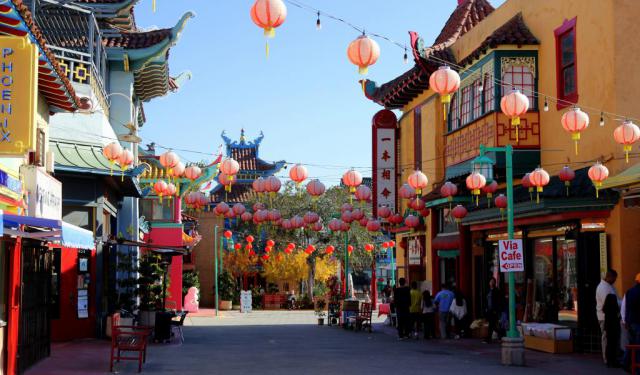


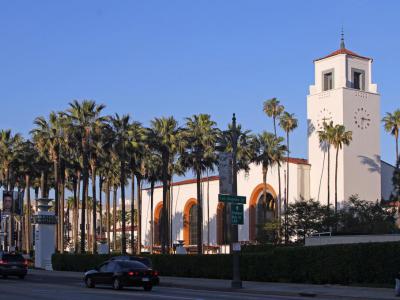
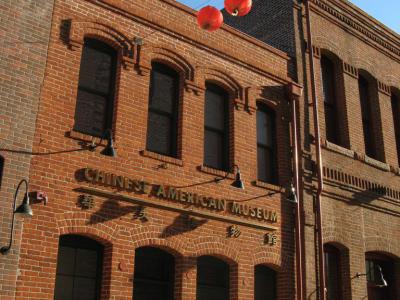
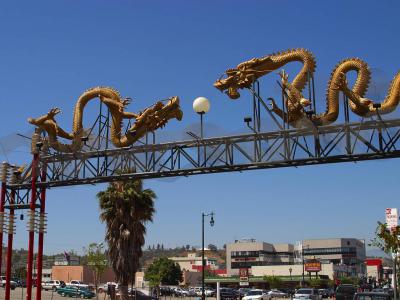
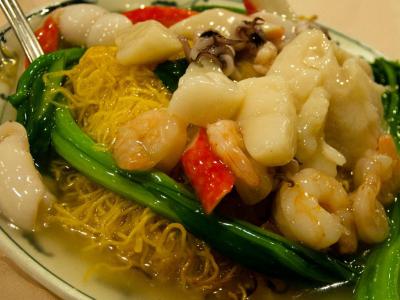
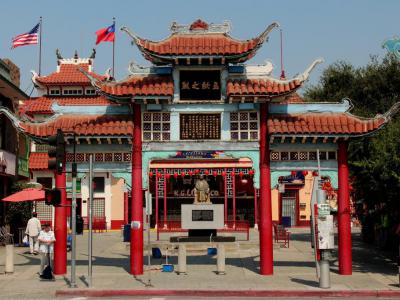
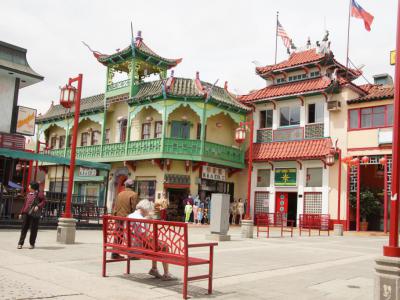
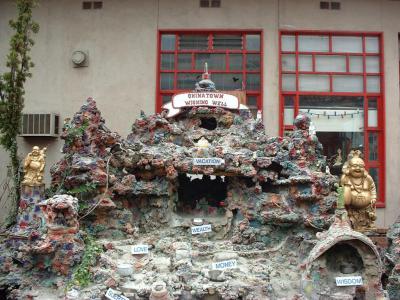
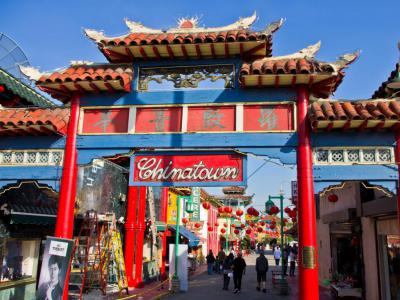
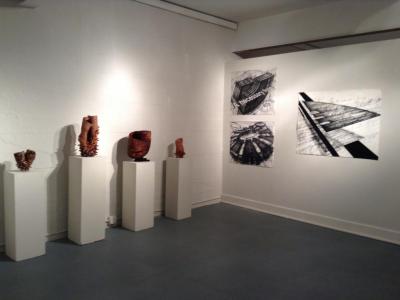





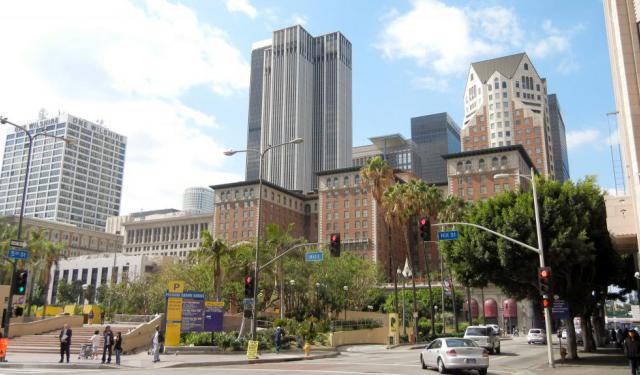

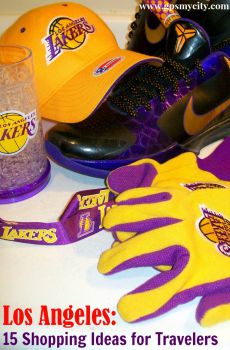
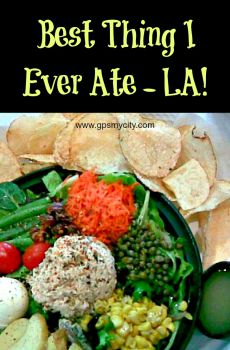.jpg)
